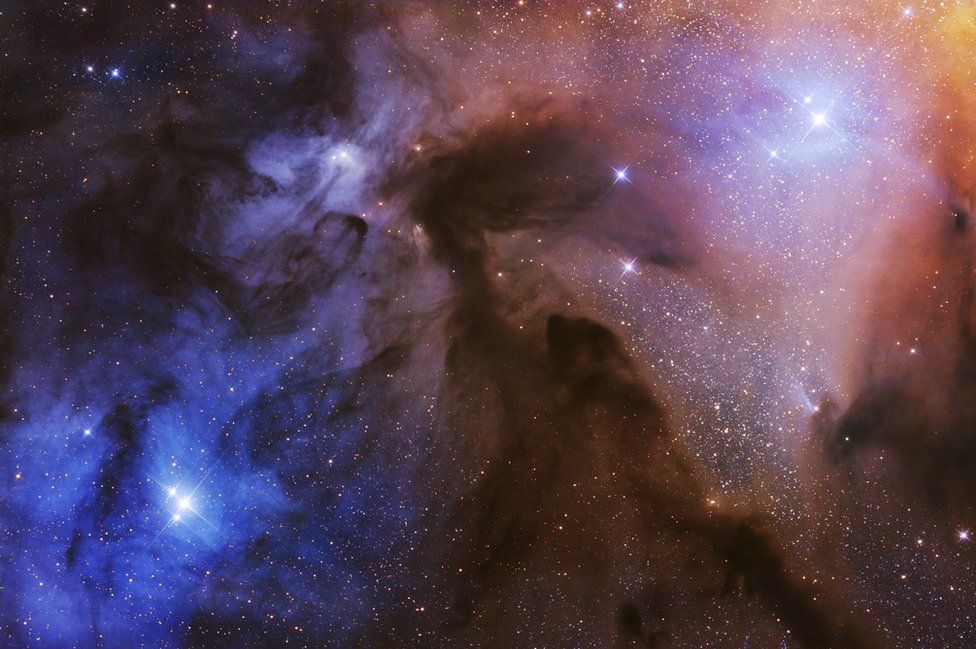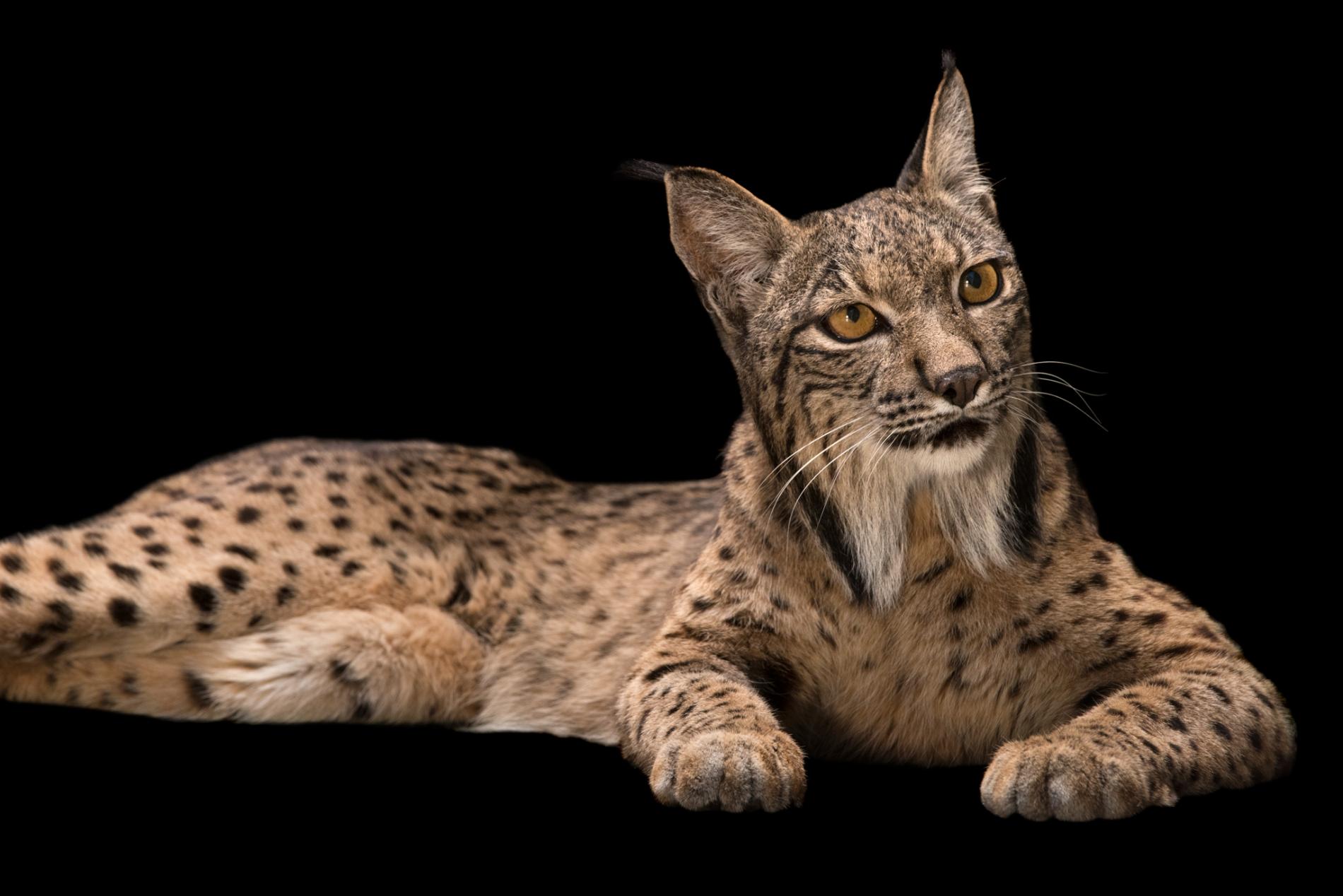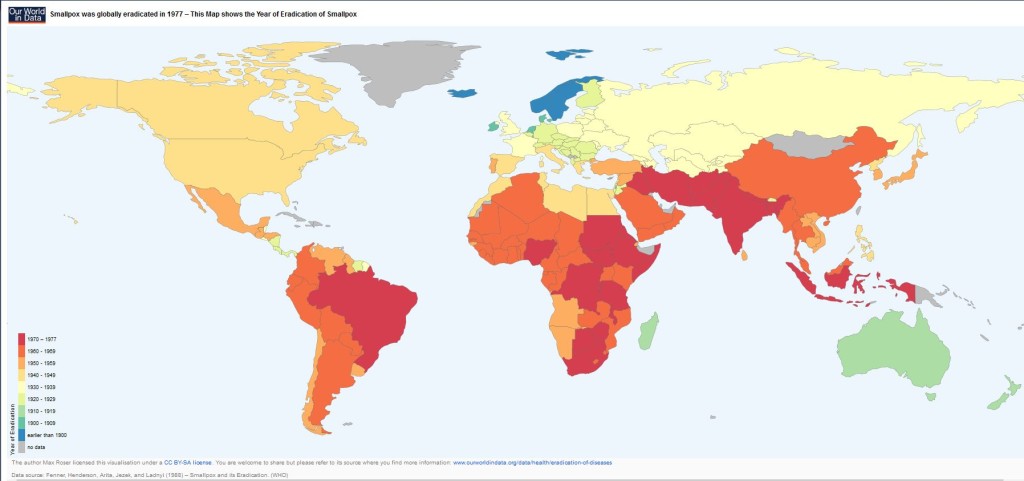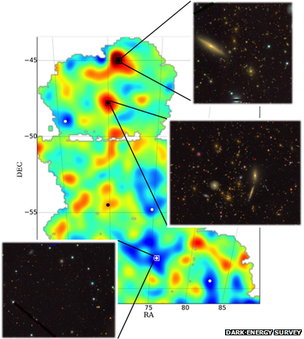Category: Science and Nature
New Great Ape Species Identified as Tapanuli Orangutan
Pongo tapanuliensis declared separate species of Orangutan
First encountered in 1997, it joins Humans, Gorillas, Chimpanzees, Bonobos, and the other Orangutans as true Great Apes
There was much to hoot about at the end of 2017, at least if you are among the orangutans hidden deep in the forests of Tapanuli, in Northern Sumatra, as they have been declared a new species of Great Ape in scientific paper “Morphometric, Behavioral, and Genomic Evidence for a New Orangutan Species,” published in the November 20 issue of Current Biology. And that declaration was based partly on the animals enormous hooting calls, which can be heard for many miles.
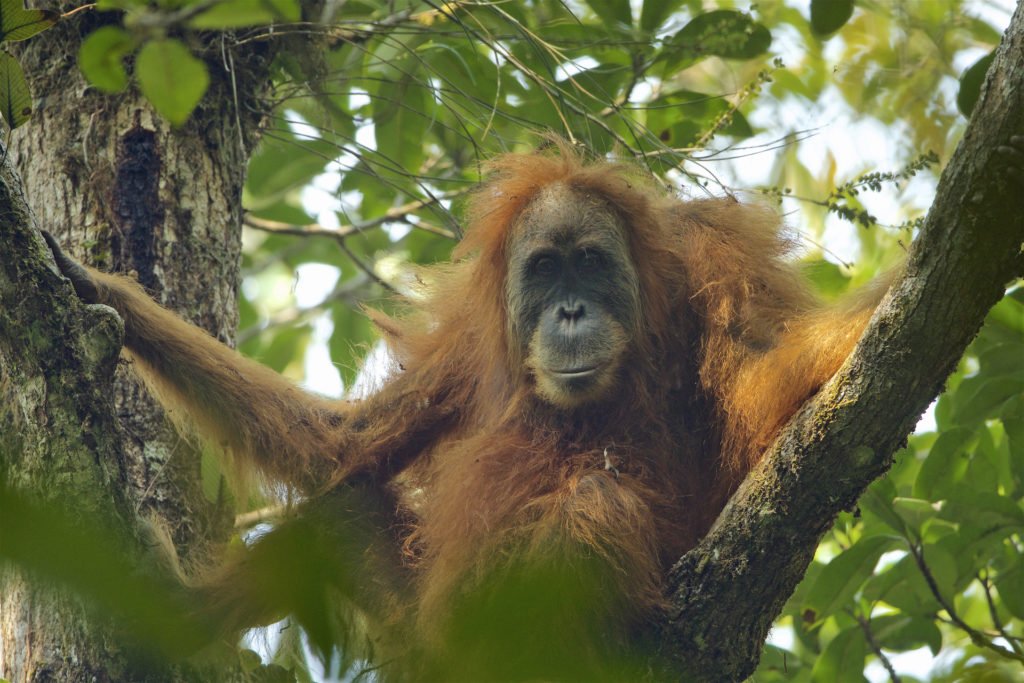 This is the first new species in almost a century to become a member of the exclusive evolutionary club that includes us Homo sapiens. The bonobo, a close evolutionary cousin of the chimpanzee was identified in 1929. In addition it unique vocalizations, the species has genetic differences, and differences in the shape of its skull and teeth spacing from the other two orangs, the Bornean orangutan (P. pygmaeus, with three subspecies) and the Sumatran orangutan (P. abelii,) which were themselves declared separate species in 1996.
This is the first new species in almost a century to become a member of the exclusive evolutionary club that includes us Homo sapiens. The bonobo, a close evolutionary cousin of the chimpanzee was identified in 1929. In addition it unique vocalizations, the species has genetic differences, and differences in the shape of its skull and teeth spacing from the other two orangs, the Bornean orangutan (P. pygmaeus, with three subspecies) and the Sumatran orangutan (P. abelii,) which were themselves declared separate species in 1996.
Photo: T. Laman
The bad news is, the scant 800 known members of this new species of orang are already among the most endangered species on earth. They reside in a small area of Northern Sumatra, with habitat already under siege by the industrious progress of mankind, about to build a dam and roads that could devastate this delicate ecosystem.
It is hoped these shy, gentle creatures will be championed by humans with the foresight to keep them from vanishing just as we come to know them better.
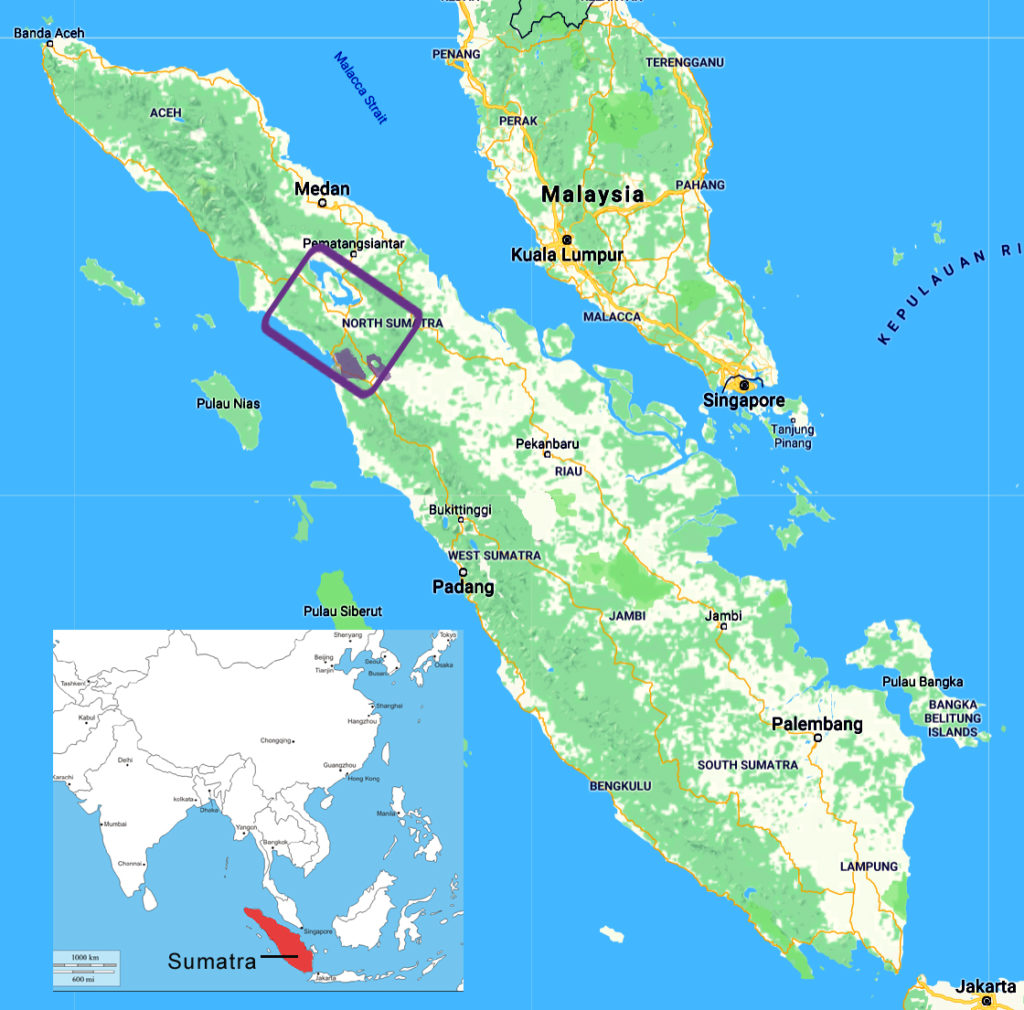 |
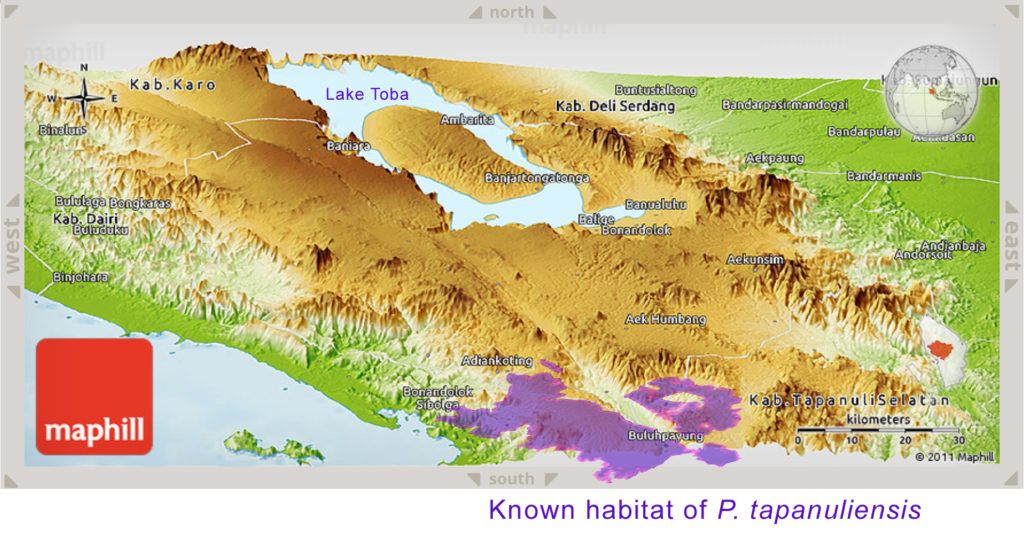 |
3D Map Courtesy of: Physical Panoramic Map of Kab. Tapanuli Utara (with my habitat overlay)
Highlights of the paper and the start of its summery include:
* We describe a new species of great apes, the Tapanuli orangutan Pongo tapanuliensis
*Genomic analyses corroborate morphological distinctiveness of P. tapanuliensis
* P. tapanuliensis comprises the oldest evolutionary lineage in the genus Pongo
* With fewer than 800 individuals, P. tapanuliensis is among the most endangered great apes
Summary
Six extant species of non-human great apes are currently recognized: Sumatran and Bornean orangutans, eastern and western gorillas, and chimpanzees and bonobos. However, large gaps remain in our knowledge of fine-scale variation in hominoid morphology, behavior, and genetics, and aspects of great ape taxonomy remain in flux. This is particularly true for orangutans (genus: Pongo), the only Asian great apes and phylogenetically our most distant relatives among extant hominids.
The paper may be acquired at Cell.com.
http://www.cell.com/current-biology/fulltext/S0960-9822(17)31245-9
Other reading:
Astronomy Photos of the Year
Nothing on earth is as awesome as space
Nothing
But these photos are still pretty awesome
“Insight Astronomy Photographer of the Year is the largest international competition of its kind, annually showcasing phenomenal photography of the night sky and the universe taken from a global community of talented astrophotographers.”
See more at http://www.rmg.co.uk/royal-observatory/insight-astronomy-photographer-year#5DmDgt2AZ2udSwLw.99
~
New Species of Giant Spider Announced
As reported in the scientific journal Zootaxa, this spider also represents a newly discovered genus.
Allow me introduce you to Califorctenus cacachilensis (Cteninae, Ctenidae, Araneae), the giant spider of the Sierra Cacachilas.
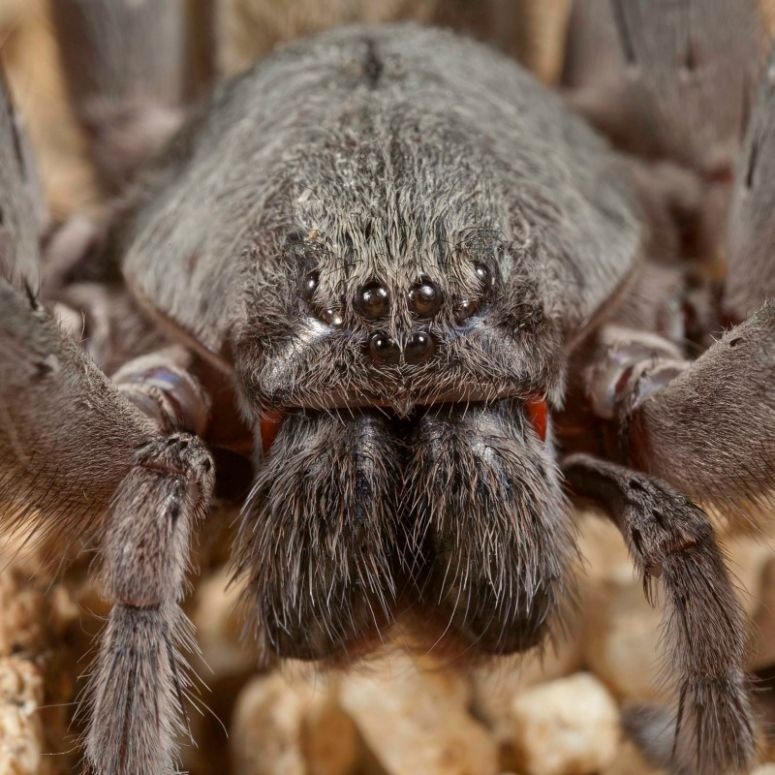
OK, the arachnid in question measures about four inches across, with a body about one inch long. But compared to most spiders in the world, that qualifies as a giant to scientists. And it would seem that way to most anyone who felt one running up their leg, or had an encounter with its furry fangs.
In fact, this new species of wandering spider is reminiscent of the infamous Brazilian wandering spider, among the most venomous arachnids in the world. Also known as the banana spider, newspaper reports of my childhood wherein Brazilian wandering spiders hitchhiked to the USA amongst banana bunches, made me extremely wary of my mother’s grocery bags.
However, you would have go to the mountain caves at the extreme tip of Baja California to find this new creepy crawler, as that is where they were discovered, doing their wandering in the dark of night, in search of prey. But one reason this new spider has been declared the first species of a newly discovered genus is that it is not as venomous as its poisonous cousins from points father south.
While new species of spiders and insects are discovered all the time, it is rare for anything so conspicuously large to be found new to science these days.
You can read more about the discovery of this new spider at Smithsonian.com (since Zootaxa costs money to read and is rather dry in the telling.)
Small Cats Get Their Due
National Geographic turns a light on small cats usually out of sight
Awesome photography of these rarely seen felines by
A fascinating article at nationalgeographic.com focuses on various cat species from around the globe many that most people have rarely seen, or even heard of.
“Advances in genotyping and sequencing reveal that Earth’s 31 small cat species hail from seven distinct lineages, each named for the first discovered species in the line.” Thus the title statement accompanying a chart showing who is related the to whom.
While large in size, the modern day cheetahs and pumas (aka cougars, North American mountain lions) are genetically related to small cats. This is why they do not roar like lions, tigers, and panthers (which include leopards and jaguars) due to a different bone structure in the neck, but can actually purr like a typical house cat.
But the world is full of all sorts of other cats that can appear familiar or incredibly exotic, and which are often singular in their remarkable habits. Or rather, it was once full of them. The all too familiar destruction of natural habitats by our own species has endangered many of this secretive members of our extended planetary family.
I have been a lover of cats since Year One


But some of the furry felines in this informative article by were new even to me.
You can read the article and see all of the wonderful photos HERE.
http://www.nationalgeographic.com/magazine/2017/02/photo-ark-little-cats/
Summer Days – Monday Map
Average Maximum Temperatures for July 2015
On the lovely first day of Summer, 2016, here is a look at what may be in store for us this coming July.
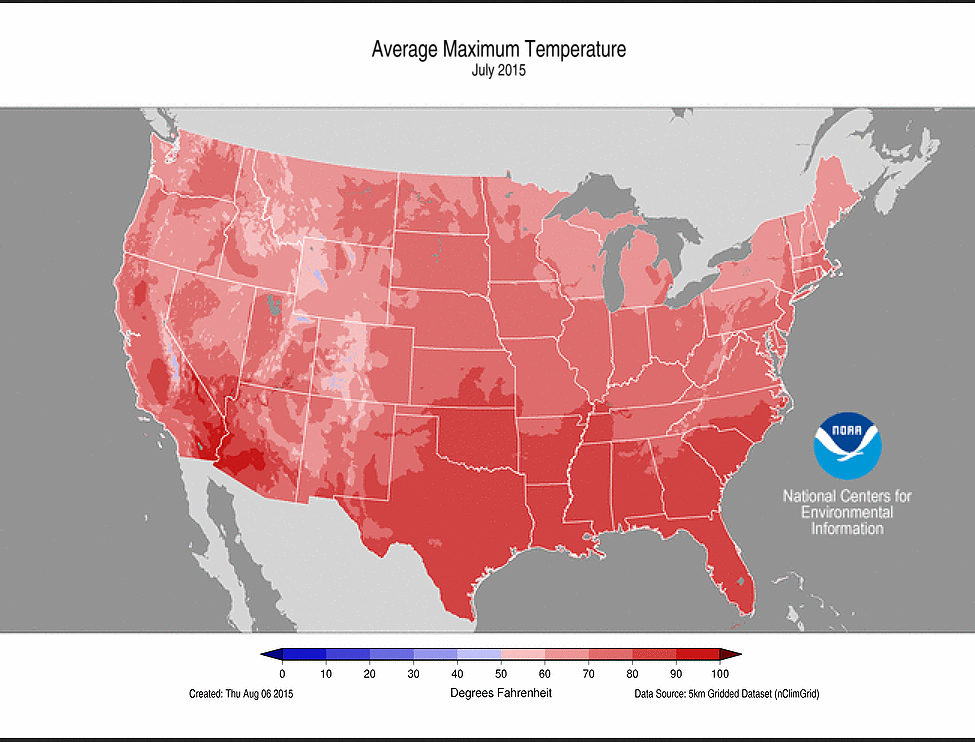
Spring as come and Spring as gone, but Summer beckons.
I grew up assuming that August was the hottest month, and it was supported by first hand experiences in recent years, as I am usually found outdoors at Martinfest in Nazareth, PA in August.
But that is the first weekend of the month and apparently more like July than the rest of August. In fact, July is almost always the hottest month of the year in the USA.
And now, if you will excuse me, I am heading out into the beautiful day, while June lasts.
The Ocean Floor – Monday Map
Behold the world’s oceans without water
What a magical, mysterious, and exotic “landscape” it would be
It makes me wonder what the planet may look like after all the water and most of the atmosphere is gone, but without all the dust has filled up smaller crevasses and caverns, as on Mars.
I also imagine taking any square area of the ocean floor from this map and using it as the map of some Tolkienesque fantasy novel, or perhaps a board game or video game filled with exotic humanoid species.
Or simply taking my own journey of 20,000 leagues under the sea.
There is some irony in my finding this map on a website of a science denier, or one more accurately described as a pseudoscience believer. In this case, his claim was to deny continental drift, which has been proven beyond doubt and continues to be measurable today. He also claims the Mid-Atlantic Ridge expanded land mass only once, when it continues to actively spew out the volcanic material that is slowly spreading North America and Europe apart at an average rate of about 2.5cm a year.
But there remain many mysteries of the deep oceans because it is well just so deep. How deep you may ask? Well this video may provide some help in understanding that very question.
See if you can locate the Marianas Trench on the map above.
Smallpox – Monday Map
In May, 1796 an English country doctor, Edward Jenner, unveiled the smallpox vaccine, which provides immunity from the dreaded disease that caused immeasurable suffering for over a thousand years.
Various forms of inoculation had existed for centuries, which were crude and risked full-blown infection. But the vaccine, the very first vaccine of its kind, opened the door the end of many horrible diseases thereafter.
Sadly, many local populations choose to use the older methods, failing to accept the modern medicine that could saved millions more from suffering a death. As this Monday map shows, most of the world did not eradicate smallpox from their populations until well into the twentieth century.
Map: http://ourworldindata.org/data/health/eradication-of-diseases/
It is a good thing the baseless anti-vaccine hysteria sweeping across America didn’t take hold. Otherwise smallpox might well be sweeping across America along with many other avoidable disease.
Mass Extinction in the Capitanian Age – Monday Map
Major Extinction Event Previous Missed By Science
According to a paper published in the Geological Society of America Bulletin
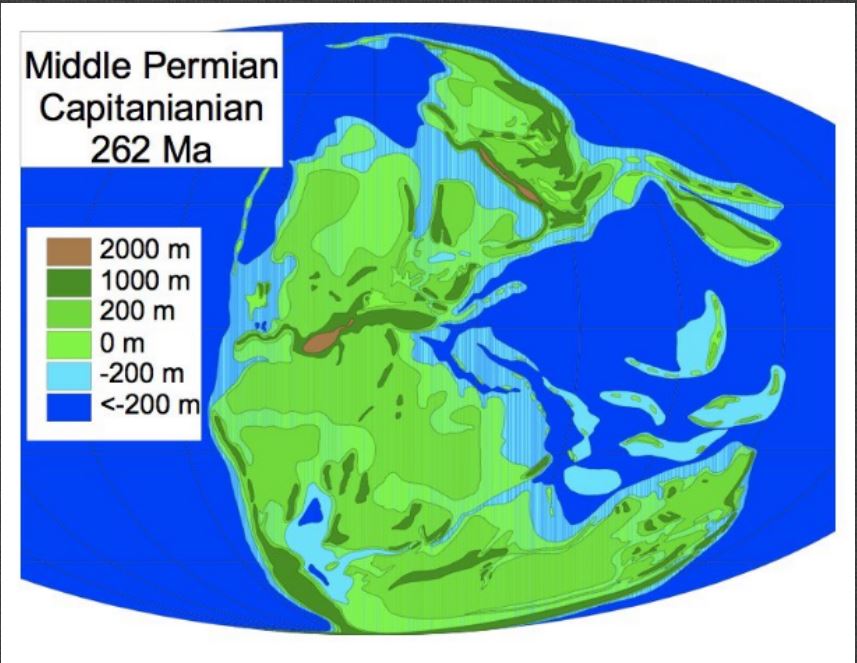
Another Near Miss
In the Svalbard archipelago, far to the north of Scandinavia is the island of Spitzbergen. There scientists have discovered what appears to be strong evidence of sixth major extinction on earth, which had been left out of the history of our home planet. Similar mass extinctions have killed off over 90% of all life on Earth.
According to an article a depletion of oxygen in the seas wiped out brachiopods, marine animals whose shell resembles the logo of Shell Oil, during the Capitanian Age of the Permian period, about 260 million years ago, some 30 million years before the first dinosaur. This was likely do to extreme volcanic activity.
Virtually no soft tissue from plants and animals can be detected from so long ago, so scientists rely on hard shells of marine life, since bones had yet to evolve.
Abstract of the Article
The controversial Capitanian (Middle Permian, 262 Ma) extinction event is only known from equatorial latitudes, and consequently its global extent is poorly resolved. We demonstrate that there were two, severe extinctions amongst brachiopods in northern Boreal latitudes (Spitsbergen) in the Middle to Late Permian, separated by a recovery phase. New age dating of the Spitsbergen strata (belonging to the Kapp Starostin Formation), using strontium isotopes and δ13C trends and comparison with better-dated sections in Greenland, suggests that the first crisis occurred in the Capitanian. This age assignment indicates that this Middle Permian extinction is manifested at higher latitudes. Redox proxies (pyrite framboids and trace metals) show that the Boreal crisis coincided with an intensification of oxygen depletion, implicating anoxia in the extinction scenario. The widespread and near-total loss of carbonates across the Boreal Realm also suggests a role for acidification in the crisis. The recovery interval saw the appearance of new brachiopod and bivalve taxa alongside survivors, and an increased mollusk dominance, resulting in an assemblage reminiscent of younger Mesozoic assemblages. The subsequent end-Permian mass extinction terminated this Late Permian radiation.
Received 7 October 2014.
Revision received 27 January 2015.
Accepted 4 March 2015.
Full text version of the article can be downloaded for free at the GSoA Bulletin website HERE
Dark Matter Survey – Monday Map
Mapping the cosmos: Dark Energy Survey creates detailed guide to spotting dark matter
“Analysis will help scientists understand the role that dark matter plays in galaxy formation,” so says the official press release.
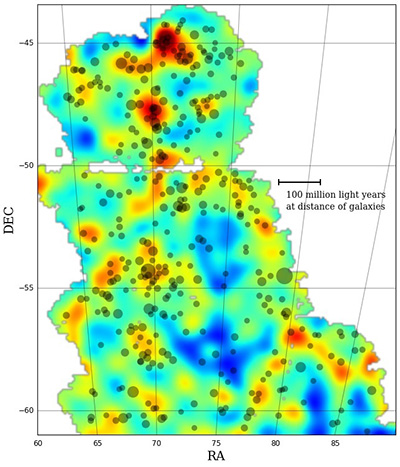
FOR IMMEDIATE RELEASE
Image: Dark Energy Survey
Scientists on the Dark Energy Survey have released the first in a series of dark matter maps of the cosmos. These maps, created with one of the world’s most powerful digital cameras, are the largest contiguous maps created at this level of detail and will improve our understanding of dark matter’s role in the formation of galaxies. Analysis of the clumpiness of the dark matter in the maps will also allow scientists to probe the nature of the mysterious dark energy, believed to be causing the expansion of the universe to speed up.
The new maps were released today at the April meeting of the American Physical Society in Baltimore, Maryland. They were created using data captured by the Dark Energy Camera, a 570-megapixel imaging device that is the primary instrument for the Dark Energy Survey (DES).
Dark matter, the mysterious substance that makes up roughly a quarter of the universe, is invisible to even the most sensitive astronomical instruments because it does not emit or block light. But its effects can be seen by studying a phenomenon called gravitational lensing – the distortion that occurs when the gravitational pull of dark matter bends light around distant galaxies. Understanding the role of dark matter is part of the research program to quantify the role of dark energy, which is the ultimate goal of the survey.
This analysis was led by Vinu Vikram of Argonne National Laboratory (then at the University of Pennsylvania) and Chihway Chang of ETH Zurich. Vikram, Chang and their collaborators at Penn, ETH Zurich, the University of Portsmouth, the University of Manchester and other DES institutions worked for more than a year to carefully validate the lensing maps.
“We measured the barely perceptible distortions in the shapes of about 2 million galaxies to construct these new maps,” Vikram said. “They are a testament not only to the sensitivity of the Dark Energy Camera, but also to the rigorous work by our lensing team to understand its sensitivity so well that we can get exacting results from it.”
The camera was constructed and tested at the U.S. Department of Energy’s Fermi National Accelerator Laboratory and is now mounted on the 4-meter Victor M. Blanco telescope at the National Optical Astronomy Observatory’s Cerro Tololo Inter-American Observatory in Chile. The data were processed at the National Center for Supercomputing Applications at the University of Illinois in Urbana-Champaign.
The dark matter map released today makes use of early DES observations and covers only about three percent of the area of sky DES will document over its five-year mission. The survey has just completed its second year. As scientists expand their search, they will be able to better test current cosmological theories by comparing the amounts of dark and visible matter.
Those theories suggest that, since there is much more dark matter in the universe than visible matter, galaxies will form where large concentrations of dark matter (and hence stronger gravity) are present. So far, the DES analysis backs this up: The maps show large filaments of matter along which visible galaxies and galaxy clusters lie and cosmic voids where very few galaxies reside. Follow-up studies of some of the enormous filaments and voids, and the enormous volume of data, collected throughout the survey will reveal more about this interplay of mass and light.
“Our analysis so far is in line with what the current picture of the universe predicts,” Chang said. “Zooming into the maps, we have measured how dark matter envelops galaxies of different types and how together they evolve over cosmic time. We are eager to use the new data coming in to make much stricter tests of theoretical models.”
View the Dark Energy Survey analysis.
The Dark Energy Survey is a collaboration of more than 300 scientists from 25 institutions in six countries. Its primary instrument, the Dark Energy Camera, is mounted on the 4-meter Blanco telescope at the National Optical Astronomy Observatory’s Cerro Tololo Inter-American Observatory in Chile, and its data is processed at the National Center for Supercomputing Applications at the University of Illinois at Urbana-Champaign.
Funding for the DES Projects has been provided by the U.S. Department of Energy Office of Science, the U.S. National Science Foundation, the Ministry of Science and Education of Spain, the Science and Technology Facilities Council of the United Kingdom, the Higher Education Funding Council for England, ETH Zurich for Switzerland, the National Center for Supercomputing Applications at the University of Illinois at Urbana-Champaign, the Kavli Institute of Cosmological Physics at the University of Chicago, Financiadora de Estudos e Projetos, Fundação Carlos Chagas Filho de Amparo à Pesquisa do Estado do Rio de Janeiro, Conselho Nacional de Desenvolvimento Científico e Tecnológico and the Ministério da Ciência e Tecnologia, the Deutsche Forschungsgemeinschaft and the collaborating institutions in the Dark Energy Survey. The DES participants from Spanish institutions are partially supported by MINECO under grants AYA2012-39559, ESP2013-48274, FPA2013-47986 and Centro de Excelencia Severo Ochoa SEV-2012-0234, some of which include ERDF funds from the European Union.
Fermilab is America’s premier national laboratory for particle physics and accelerator research. A U.S. Department of Energy Office of Science laboratory, Fermilab is located near Chicago, Illinois, and operated under contract by the Fermi Research Alliance, LLC. Visit Fermilab’s website at www.fnal.gov and follow us on Twitter at @Fermilab.
The DOE Office of Science is the single largest supporter of basic research in the physical sciences in the United States and is working to address some of the most pressing challenges of our time. For more information, please visit science.energy.gov.
Media contacts:
- Andre Salles, Fermilab Office of Communication, 630-840-3351, media@fnal.gov
Science contacts:
- Josh Frieman, director of the Dark Energy Survey, 847-274-0429, frieman@fnal.gov
- Chihway Chang, ETH Zurich, +41-798101425, chihway.chang@phys.ethz.ch
- Bhuvnesh Jain, University of Pennsylvania, 267-973-7063, bjain@physics.upenn.edu
- Gary Bernstein, University of Pennsylvania, 215-573-6252, garyb@physics.upenn.edu

